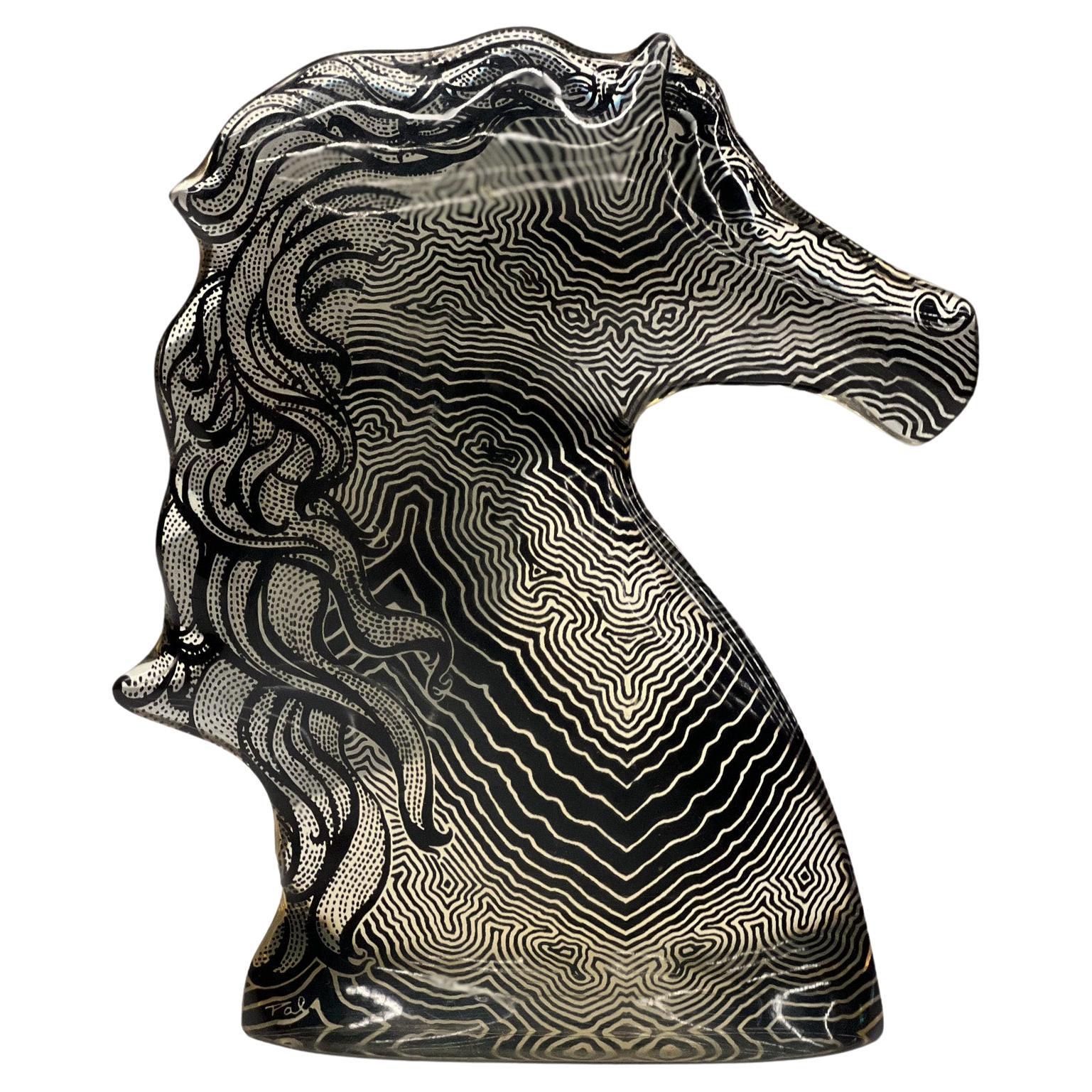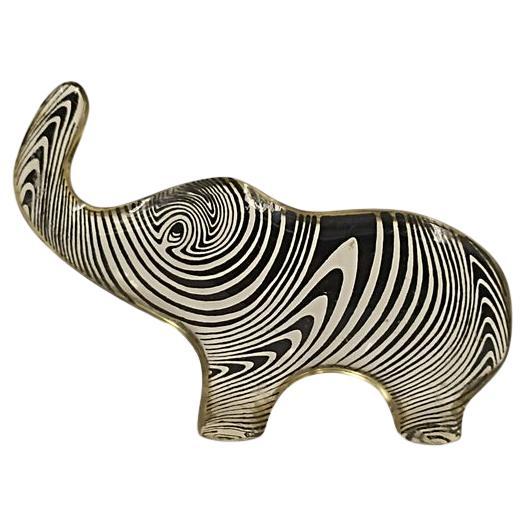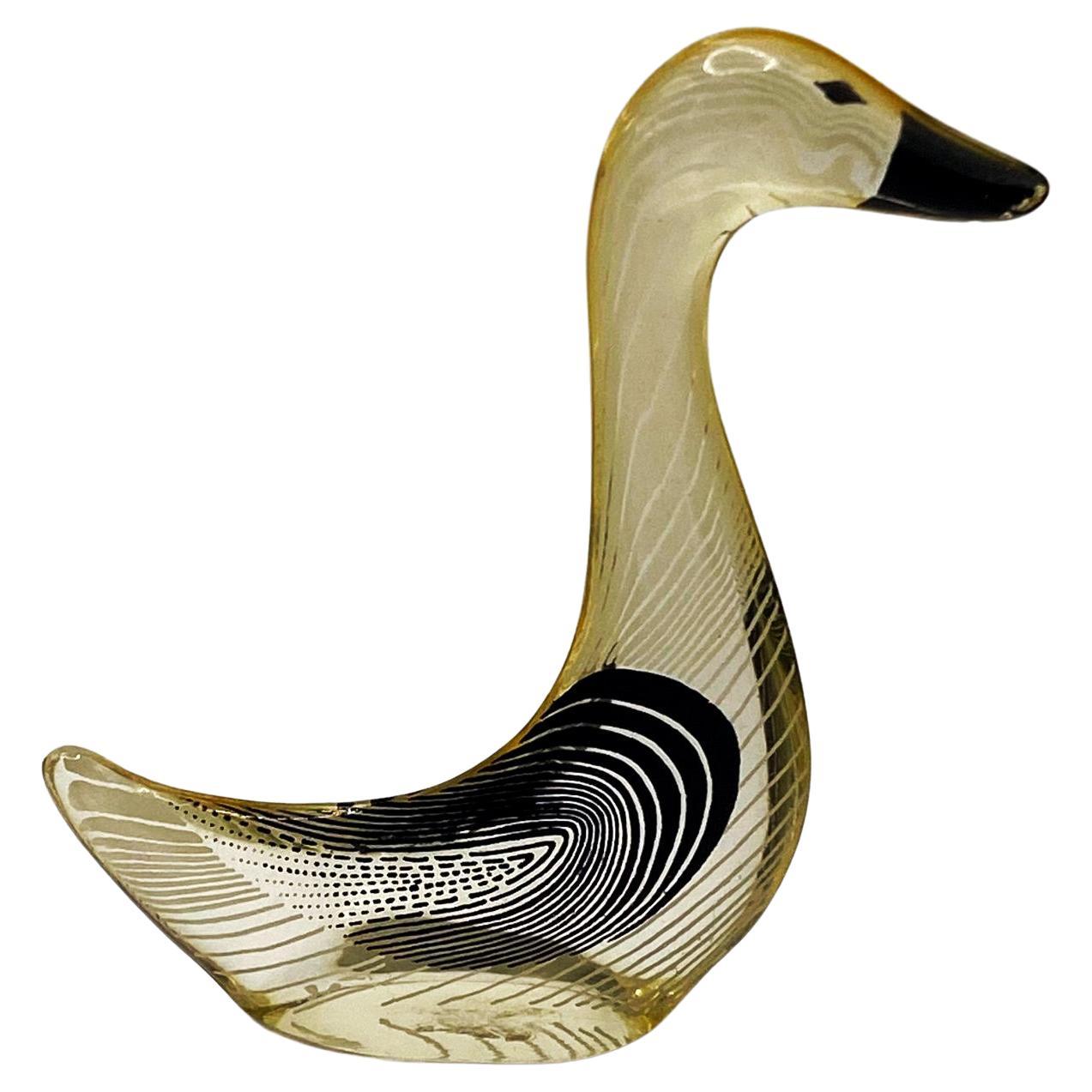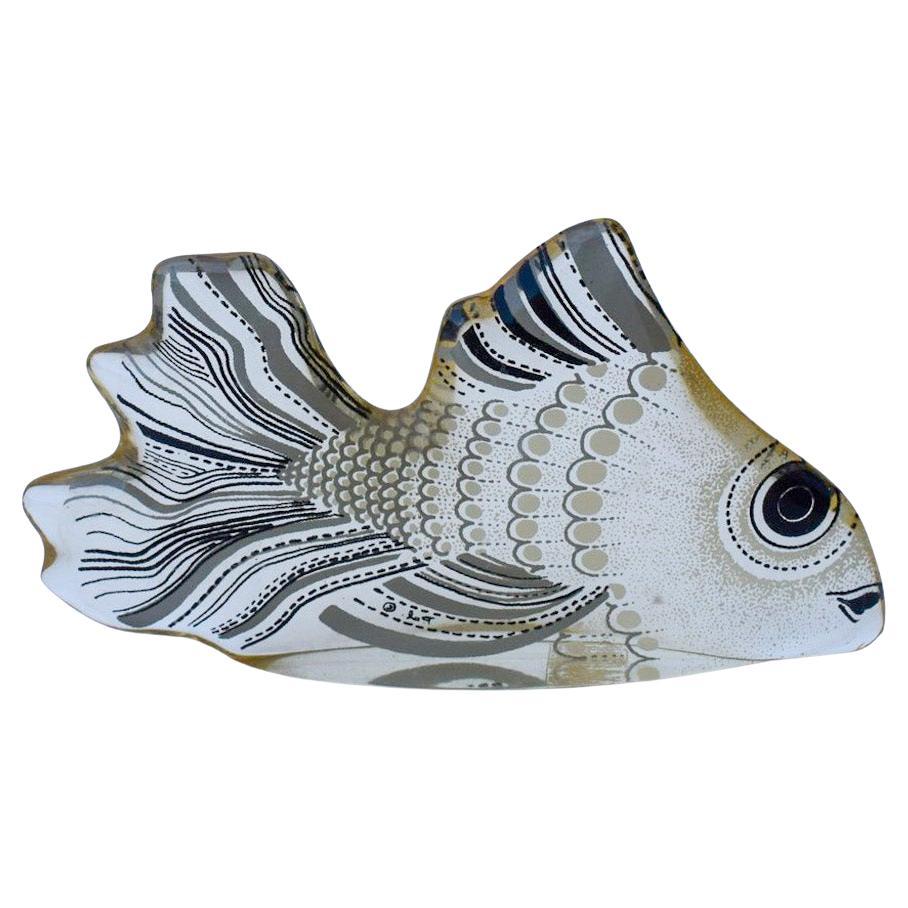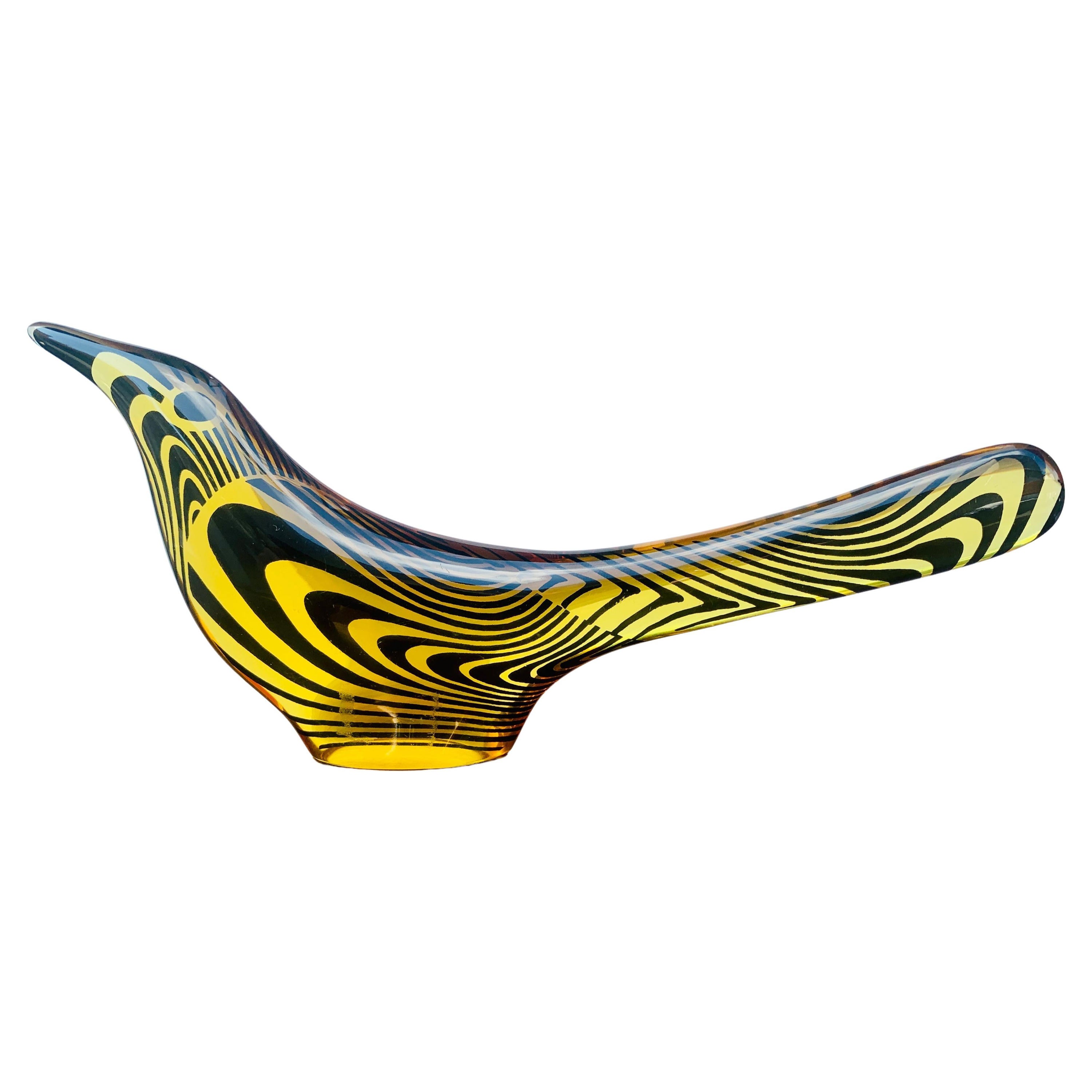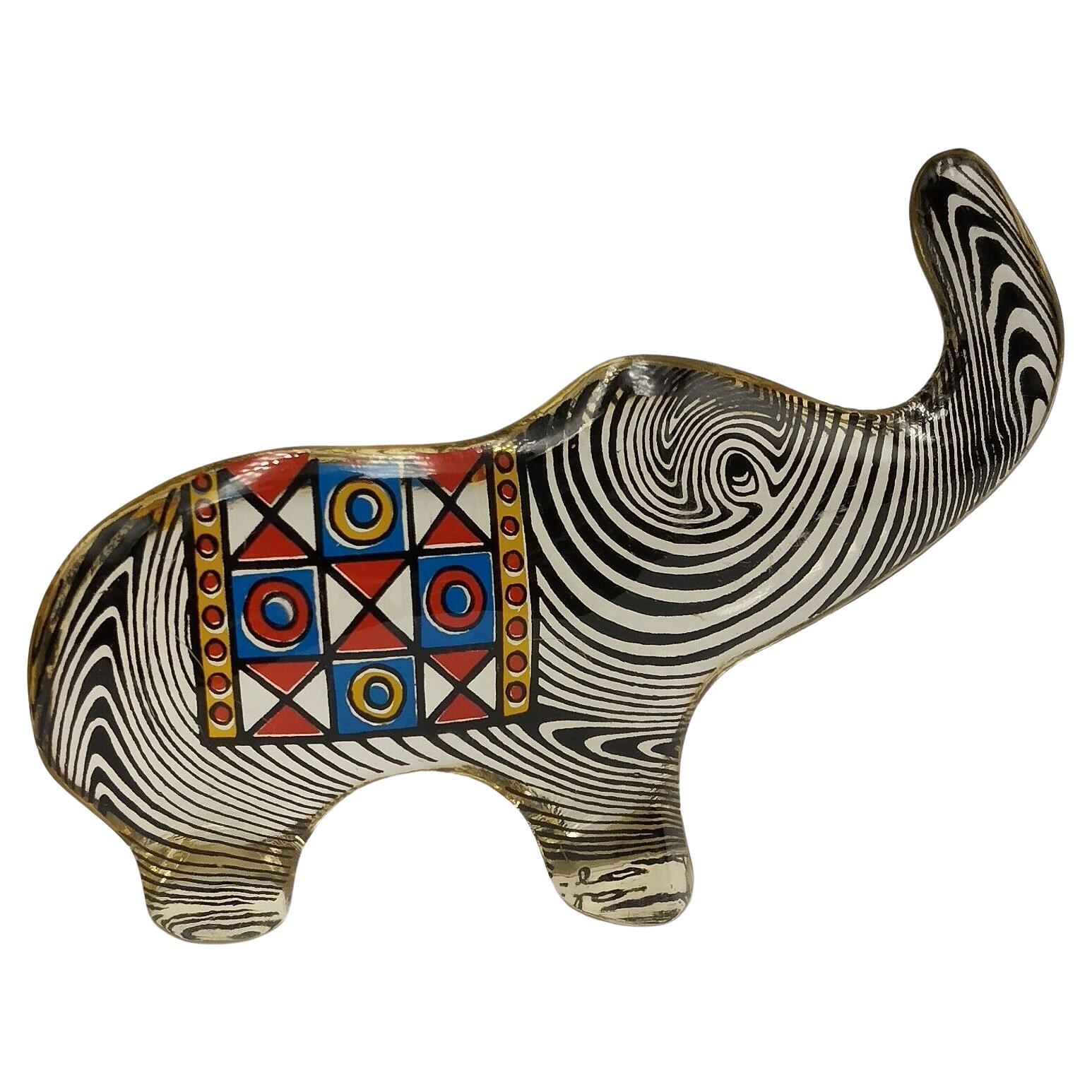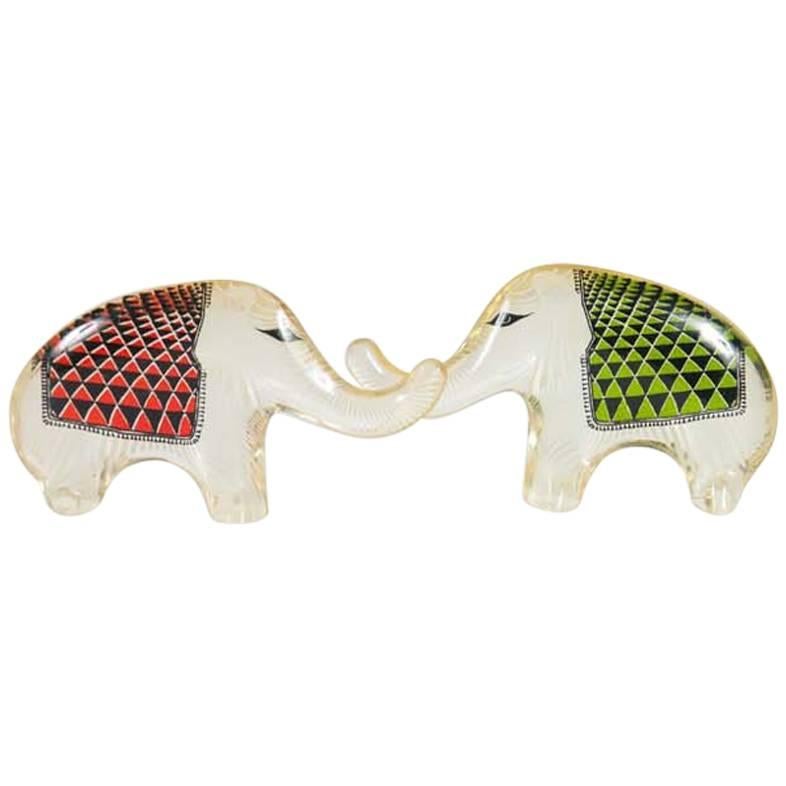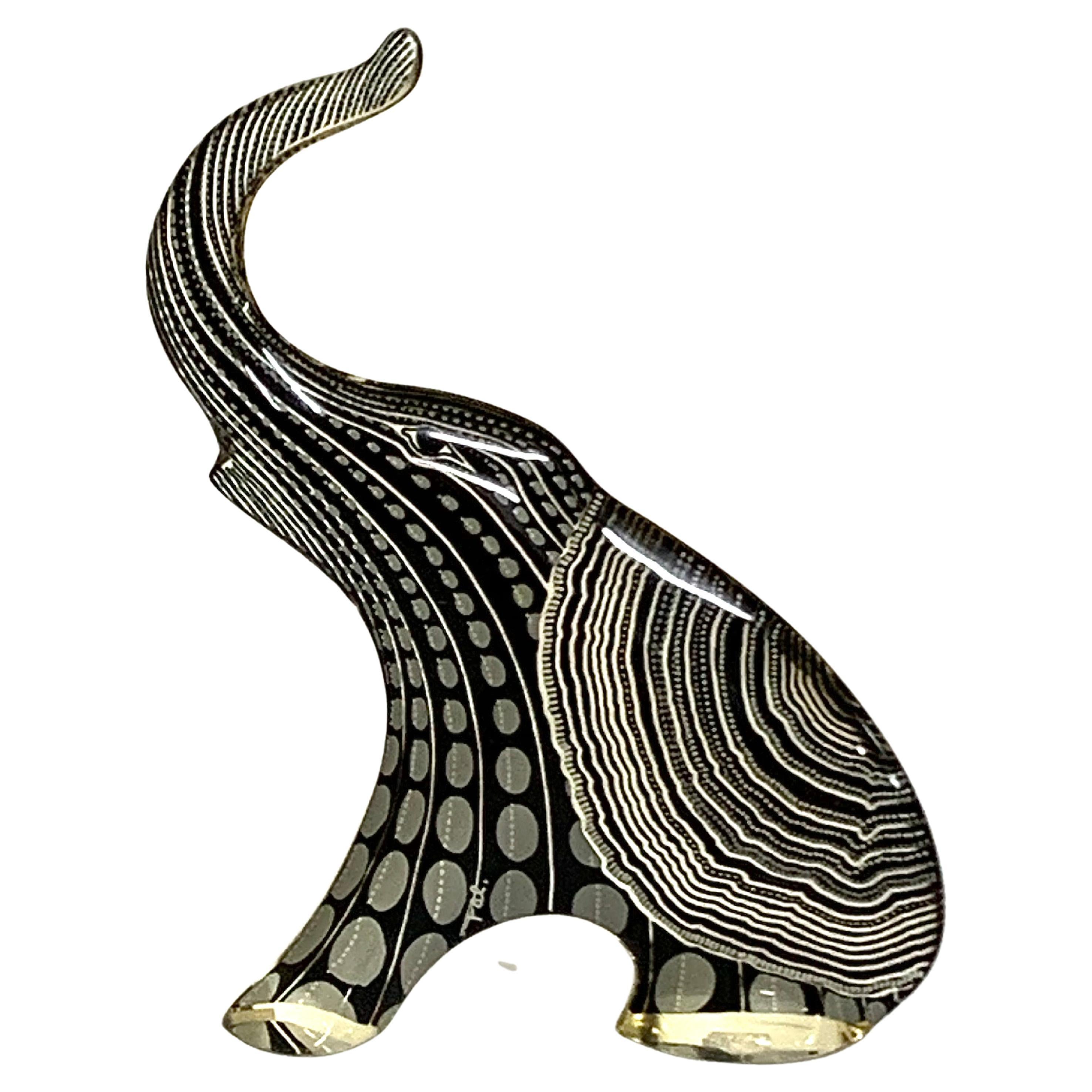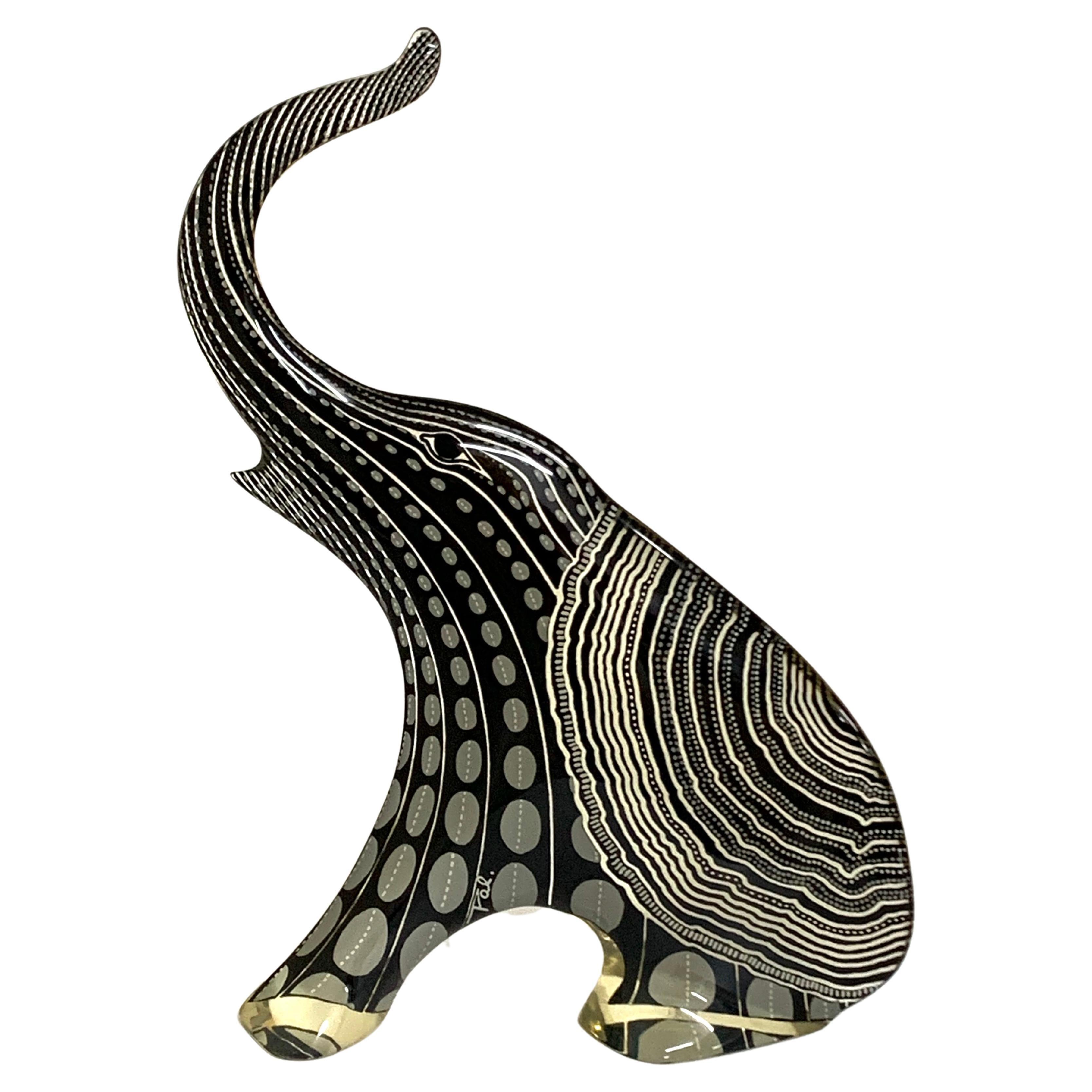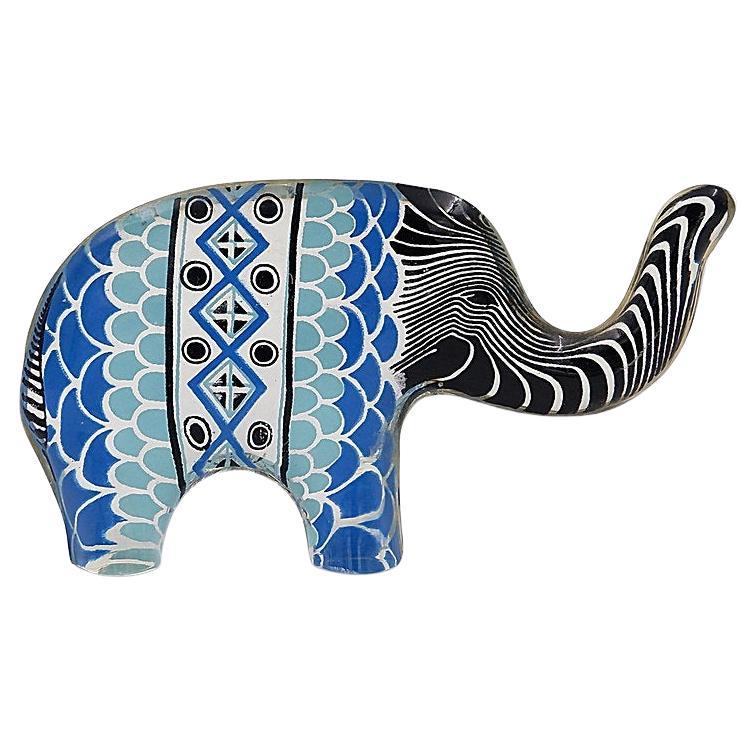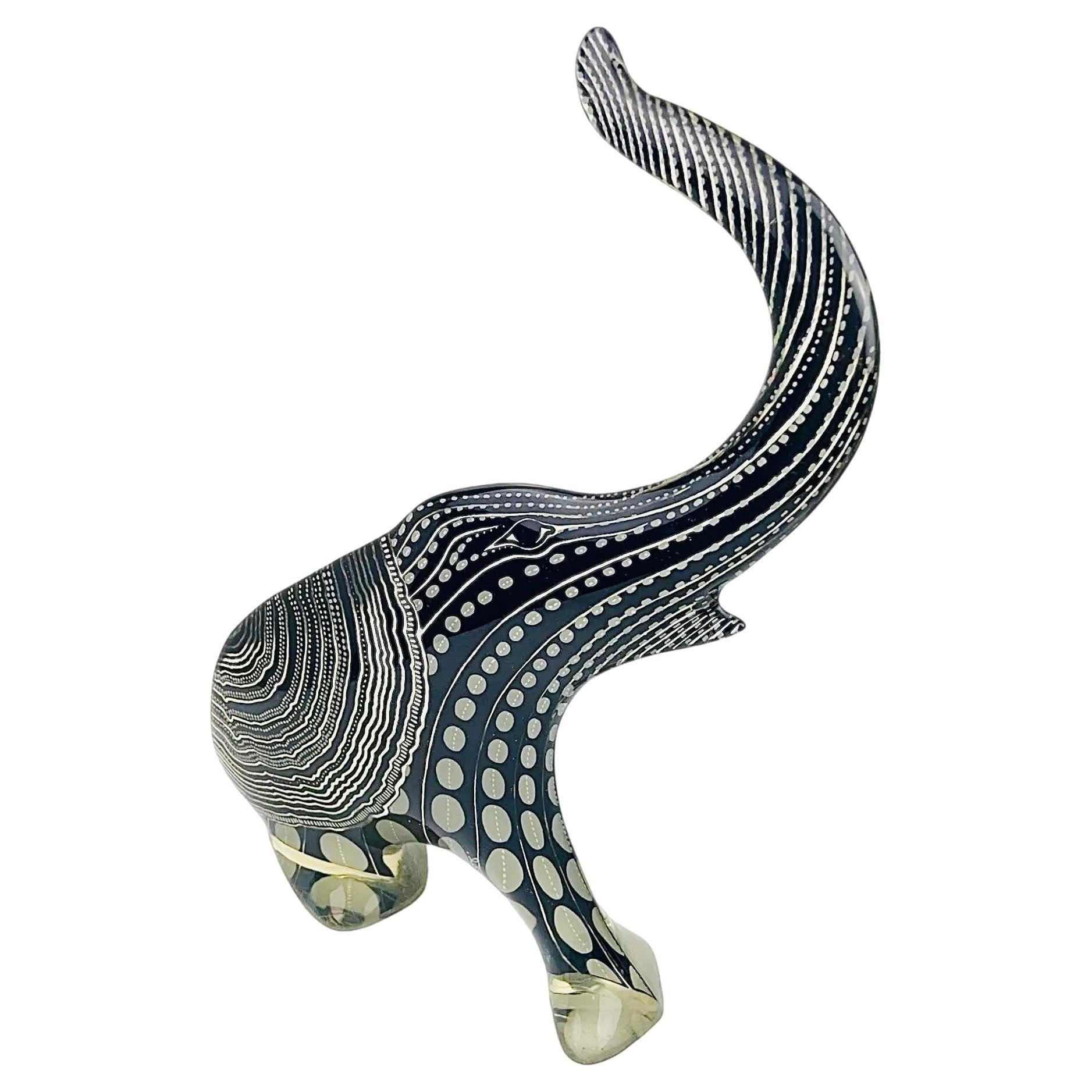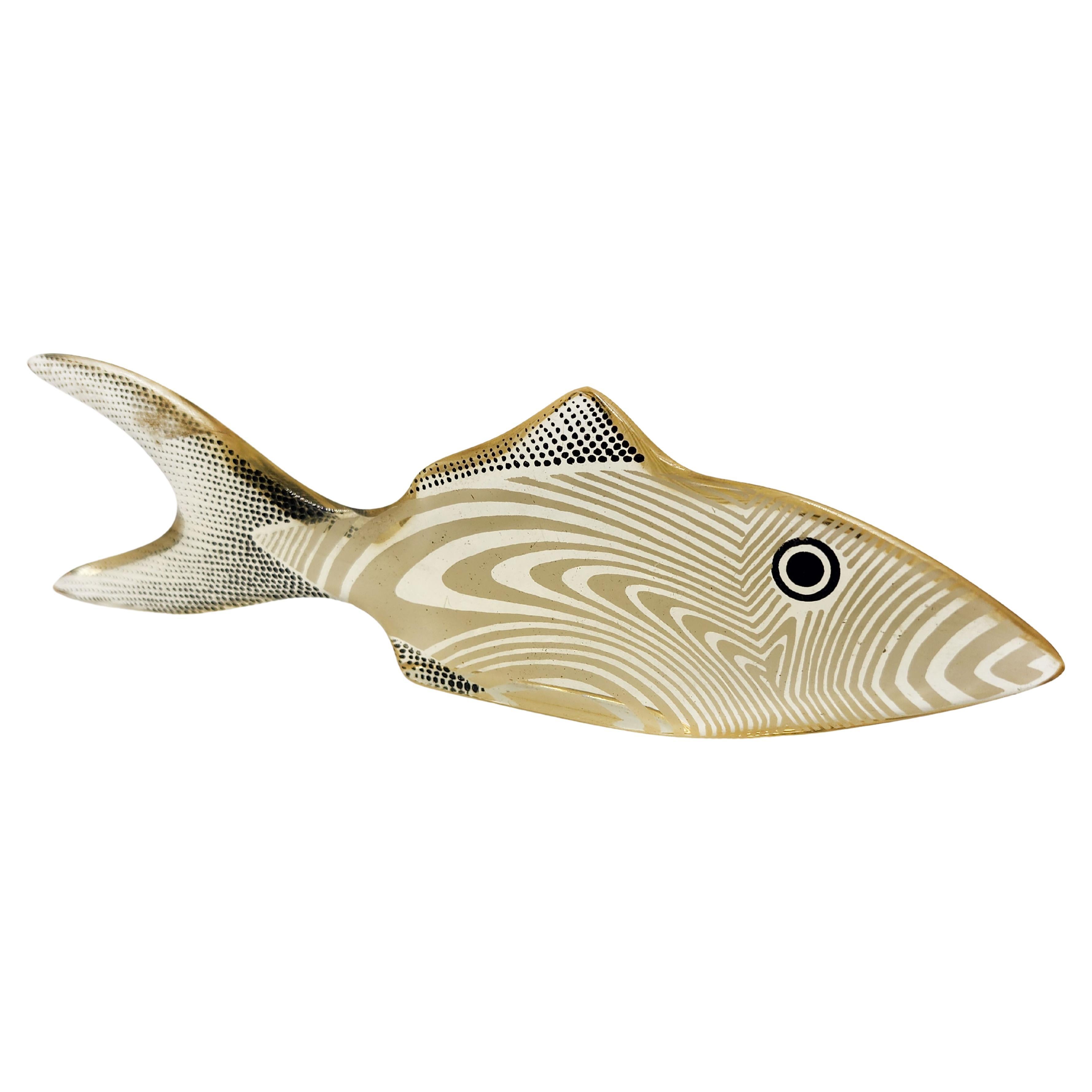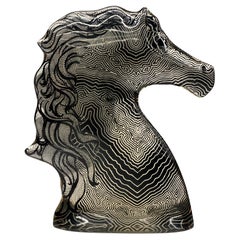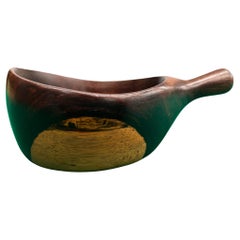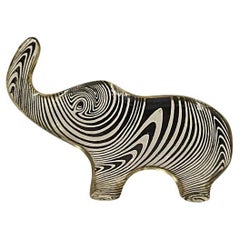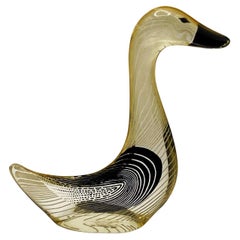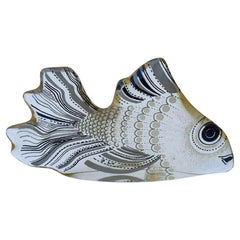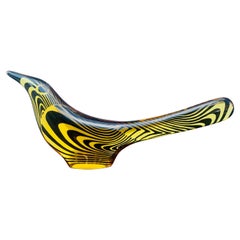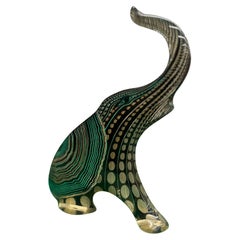
Brazilian Modern Kinetic Sculpture of Elephant by Abraham Palatinik, 1960s
View Similar Items
Video Loading
Want more images or videos?
Request additional images or videos from the seller
1 of 9
Brazilian Modern Kinetic Sculpture of Elephant by Abraham Palatinik, 1960s
About the Item
- Creator:Abraham Palatnik (Designer)
- Dimensions:Height: 9.1 in (23.12 cm)Width: 1.2 in (3.05 cm)Depth: 1.2 in (3.05 cm)
- Style:Mid-Century Modern (Of the Period)
- Materials and Techniques:
- Place of Origin:
- Period:
- Date of Manufacture:1960-1969
- Condition:Wear consistent with age and use.
- Seller Location:New York, NY
- Reference Number:Seller: 4311stDibs: LU7095233321162
About the Seller
5.0
Platinum Seller
Premium sellers with a 4.7+ rating and 24-hour response times
Established in 2022
1stDibs seller since 2022
57 sales on 1stDibs
Authenticity Guarantee
In the unlikely event there’s an issue with an item’s authenticity, contact us within 1 year for a full refund. DetailsMoney-Back Guarantee
If your item is not as described, is damaged in transit, or does not arrive, contact us within 7 days for a full refund. Details24-Hour Cancellation
You have a 24-hour grace period in which to reconsider your purchase, with no questions asked.Vetted Professional Sellers
Our world-class sellers must adhere to strict standards for service and quality, maintaining the integrity of our listings.Price-Match Guarantee
If you find that a seller listed the same item for a lower price elsewhere, we’ll match it.Trusted Global Delivery
Our best-in-class carrier network provides specialized shipping options worldwide, including custom delivery.More From This Seller
View AllBrazilian Modern Sculpture of a Horse in Resin, Abraham Palatinik, 1960s
By Abraham Palatnik
Located in New York, NY
Available today, this Brazilian Modern Kinetic Sculpture of a Heron in Resin by Abraham Palatinik made in the 1960s is gorgeous!
This is part of the Artemis collection that featur...
Category
Vintage 1960s Brazilian Mid-Century Modern Animal Sculptures
Materials
Resin
Brazilian Modern Sideboard in Hardwood by Ando & Cia, Brazil, 1960s
Located in New York, NY
Available today, with domestic shipping in NYC metro area included, this Brazilian Modern Sideboard in Hardwood by Ando & Cia, 1960s made in Brazil is nothing less than spectacular!
...
Category
Mid-20th Century Brazilian Mid-Century Modern Sideboards
Materials
Formica, Hardwood
Brazilian Modern Magazine Rack in Hardwood, Brazil, 1960s
Located in New York, NY
Available today, this Brazilian Modern magazine rack in Jacaranda hardwood is stunning!
This magazine rack is made with Brazilian Rosewood which is also known as Jacaranda hardwood. It is a dark brown color and would be a perfect fit for any office or home space. It can be used to hold magazines, folders, paperwork, and even books!
The magazine rack is showcased in our showroom next to a gray velvet sofa...
Category
Mid-20th Century Brazilian Mid-Century Modern Magazine Racks and Stands
Materials
Hardwood
Midcentury Brazilian Modern Bowl in Hardwood by Jean Gillon, 1960s, Brazil
By Jean Gillon
Located in New York, NY
Available today, this midcentury Brazilian modern rosewood decorative Bowl was designed by Jean Gillon for WoodArt and made in Brazil circa 1960. Handcrafted from hard Rosewood (also known as jacaranda), the bowl features clean lines with elegant curves. The rosewood has two tones with stunning natural wood grain. The manufacturing seal is at the bottom of the bowl.
Jean Gillon was a Brazilian furniture designer born in Romania in 1919. He studied at the Architecture and Fine arts Schools at the National University. After immigrating to São Paulo, Brazil in 1956, he founded his first company, Fábrica de Móveis Cidam, in 1961. Gillon's firm designed many luxury hotels, homes, and stores throughout Brazil. He was known for his one of a kind tapestries. His second furniture company, WoodArt, produced full lines of Brazilian rosewood furniture...
Category
Vintage 1960s Brazilian Mid-Century Modern Decorative Bowls
Materials
Wood
Brazilian Modern Chairs in Hardwood & Leather by Rino Levi, Brazil, 1960s
By Rino Levi
Located in New York, NY
Available today, with domestic shipping in NYC metro area included. This set of Mid Century Modern is nothing less than spectacular.
This set of four Brazilian modern chairs, des...
Category
Mid-20th Century Brazilian Mid-Century Modern Dining Room Chairs
Materials
Leather, Hardwood
Brazilian Modern Armchairs in Hardwood & Caning, Unknown, Brazil, 1960s
Located in New York, NY
Available today, these four Brazilian Modern Armchairs in Rosewood & Handwoven Cane, are exquisite.
The armchairs are made of solid Brazilian Rosewood and handwoven cane in the seat...
Category
Mid-20th Century Brazilian Mid-Century Modern Armchairs
Materials
Straw, Hardwood
You May Also Like
Abraham Palatnik, Elephant, Kinetic Sculpture in Acrylic Resin, Brazil, C. 1960
By Abraham Palatnik
Located in PARIS, FR
Abraham Palatnik (1928-2020)
Sculpture "Elephant", c. 1960
Vintage label (made in Brazil).
Polyester resin and pigment in black.
Kinetic art - Beautiful and rare polyester resin sculpture from the HOME AND FARM collection representing an elephant signed in the base.
This sculpture is part of the series of animal sculptures that Abraham Palatnik made from the 1960s, in small format, they are small jewels of kinetic art, a movement of which he was one of the pioneers.
"Born in Natal, Rio Grande do Norte, Brazil, in 1928 to a family of Russian Jews, Palatnik moved with his family to Tel Aviv (then Palestine) when he was four years old. He attended Montefiori Technical School, where he specialized in internal combustion engines, and studied art under the tutelage of the painter Haaron Avni and the sculptor Sternshus at the Municipal Institute of Art. When he returned to Brazil in 1948, his output consisted mainly of figurative and landscape paintings and charcoal drawings. However, his encounters with the complex works made by schizophrenic patients at the Pedro II Psychiatric Hospital, where he taught painting workshops alongside Almir Mavignier and Ivan Serpa, caused him to abandon his early approach to traditional image-making: “I decided to start all over from scratch,” Palatnik said. “The discipline from the school, the studio, was no longer of any use.”
Freed from the perceived restrictions of his training, Palatnik became closely associated with Grupo Frente, a movement started by Serpa and rooted in geometric abstraction. He used his knowledge of engineering and mechanics as well as his interest in natural forces to build his first Kinechromatic work. Titled Azul e roxo em seu primeiro movimento (Blue and Purple in First Movement), 1949, the piece debuted at the inaugural São Paulo Bienal in 1951. “In reality, it was luck that got me into the biennial,” Palatnik said in a 1986 interview. “At first, my machine was rejected, because it wasn’t a painting, a sculpture, a drawing, or a print.” The piece, which eventually gained entry, shocked the biennial’s grand prize jury, who gave Palatnik an honorable mention, calling his work an “important manifestation of modern art.” By 1969, he had participated in seven more editions of the international exhibition.
Palatnik would also present work in the 1964 Venice Biennale, the 1966 Biennial of Córdoba, and the 1997 and 2005 editions of the Mercosul Biennial. His art was featured in significant exhibitions on kinetic art, including “Mouvement 2” (1964) at Denise René gallery in Paris; “Lumière, Mouvement et Optique” (1965) at the Brussels Palace of Fine Arts; “Kinetic Art” (1966) at the Museum of San Francisco; and, more recently, “Delirious: Art at the Limits of Reason, 1950–1980” (2017) at the Metropolitan Museum of Art in New York and “The Other Trans-Atlantic: Kinetic & Op Art in Central & Eastern Europe and Latin America 1950s–1970s” (2018) at Sesc Pinheiros in São Paulo. A major retrospective, “Abraham Palatnik—The Reinvention of Painting,” was staged at several venues across Brazil, including the Centro Cultural Banco do Brasil Rio de Janeiro (2017); the Fundação Iberê...
Category
Mid-20th Century Brazilian Kinetic Animal Sculptures
Materials
Acrylic, Paint
Abraham Palatnik, Goose, Kinetic Sculpture in Acrylic Resin, Brazil, C. 1960
By Abraham Palatnik
Located in PARIS, FR
Abraham Palatnik (1928-2020)
Sculpture "Canard", c. 1960
Polyester resin and pigment in black and white.
Kinetic art - Beautiful and rare polyester resin sculpture from the HOME AND FARM collection representing an goose.
This sculpture is part of the series of animal sculptures that Abraham Palatnik made from the 1960s, in small format, they are small jewels of kinetic art, a movement of which he was one of the pioneers.
"Born in Natal, Rio Grande do Norte, Brazil, in 1928 to a family of Russian Jews, Palatnik moved with his family to Tel Aviv (then Palestine) when he was four years old. He attended Montefiori Technical School, where he specialized in internal combustion engines, and studied art under the tutelage of the painter Haaron Avni and the sculptor Sternshus at the Municipal Institute of Art. When he returned to Brazil in 1948, his output consisted mainly of figurative and landscape paintings and charcoal drawings. However, his encounters with the complex works made by schizophrenic patients at the Pedro II Psychiatric Hospital, where he taught painting workshops alongside Almir Mavignier...
Category
Mid-20th Century Brazilian Kinetic Animal Sculptures
Materials
Acrylic, Paint
Abraham Palatnik, Fish, Kinetic Sculpture in Acrylic Resin, Brazil, C. 1960
By Abraham Palatnik
Located in PARIS, FR
Abraham Palatnik (1928-2020)
Sculpture "Fish", c. 1960
Polyester resin and pigment in black and white.
Signed PAL
Kinetic art - Beautiful and rare polyester resin sculpture from the HOME AND FARM collection representing a goose.
This sculpture is part of the series of animal sculptures that Abraham Palatnik made from the 1960s, in small format, they are small jewels of kinetic art, a movement of which he was one of the pioneers.
"Born in Natal, Rio Grande do Norte, Brazil, in 1928 to a family of Russian Jews, Palatnik moved with his family to Tel Aviv (then Palestine) when he was four years old. He attended Montefiori Technical School, where he specialized in internal combustion engines, and studied art under the tutelage of the painter Haaron Avni and the sculptor Sternshus at the Municipal Institute of Art. When he returned to Brazil in 1948, his output consisted mainly of figurative and landscape paintings and charcoal drawings. However, his encounters with the complex works made by schizophrenic patients at the Pedro II Psychiatric Hospital, where he taught painting workshops alongside Almir Mavignier...
Category
Mid-20th Century Brazilian Kinetic Animal Sculptures
Materials
Acrylic, Paint
Abraham Palatnik, Bird, Kinetic Sculpture in Acrylic Resin, Brazil, circa 1960
By Abraham Palatnik
Located in PARIS, FR
Abraham Palatnik (1928-2020)
Bird Sculpture, circa 1960
Polyester resin and pigments.
Measures: (21.5 x 9.5 x 2.5 cm)
This Polyester resin sculpture representing a bird, in the colors yellow and black
It is part of the series of animal sculptures that Abraham Palatnik made from the 1960s, in small format, they are small jewels of kinetic art, a movement that Palatnik was one of the pioneers.
"Born in Natal, Rio Grande do Norte, Brazil, in 1928 to a family of Russian Jews, Palatnik moved with his family to Tel Aviv (then Palestine) when he was four years old. He attended Montefiori Technical School, where he specialized in internal combustion engines, and studied art under the tutelage of the painter Haaron Avni and the sculptor Sternshus at the Municipal Institute of Art. When he returned to Brazil in 1948, his output consisted mainly of figurative and landscape paintings and charcoal drawings. However, his encounters with the complex works made by schizophrenic patients at the Pedro II Psychiatric Hospital, where he taught painting workshops alongside Almir Mavignier...
Category
Mid-20th Century Brazilian Kinetic Animal Sculptures
Materials
Acrylic
$324 Sale Price
37% Off
Abraham Palatnik. Elephant, c. 1960
By Abraham Palatnik
Located in PARIS, FR
Kinetic art - Beautiful and rare polyester resin sculpture from the HOME AND FARM collection representing an elephant signed in the base. c. 1960.
This sculpture is part of the seri...
Category
Mid-20th Century Brazilian Kinetic Mobiles and Kinetic Sculptures
Materials
Acrylic
Two Adorable Elephant Calves Made Out of Lucite by Abraham Palatnik Brazil
By Abraham Palatnik
Located in Doornspijk, NL
These two young elephants have there own colored covers; one in red the other in green. They seem to search for there parents.
Both youngsters are signed with "Pal".
The Brazili...
Category
Mid-20th Century Brazilian Mid-Century Modern Animal Sculptures
Materials
Lucite
Recently Viewed
View AllMore Ways To Browse
Abraham Palatnik Elephant
Copper Frog
Dove Figurine
Edouard Sandoz Porcelain
End Of The Trail Sculpture
Formia Vetri
Glass Eagle Claw
Green Parrot Ceramic
Greyhound Racing
Hound Statue
Iron Deer Sculpture
Ironwood Carving
J Anthony Redmile
Large Cloisonne Animal
Larson Pottery
Lucite Elephant
Maitland Bird
Maitland Smith Bird
